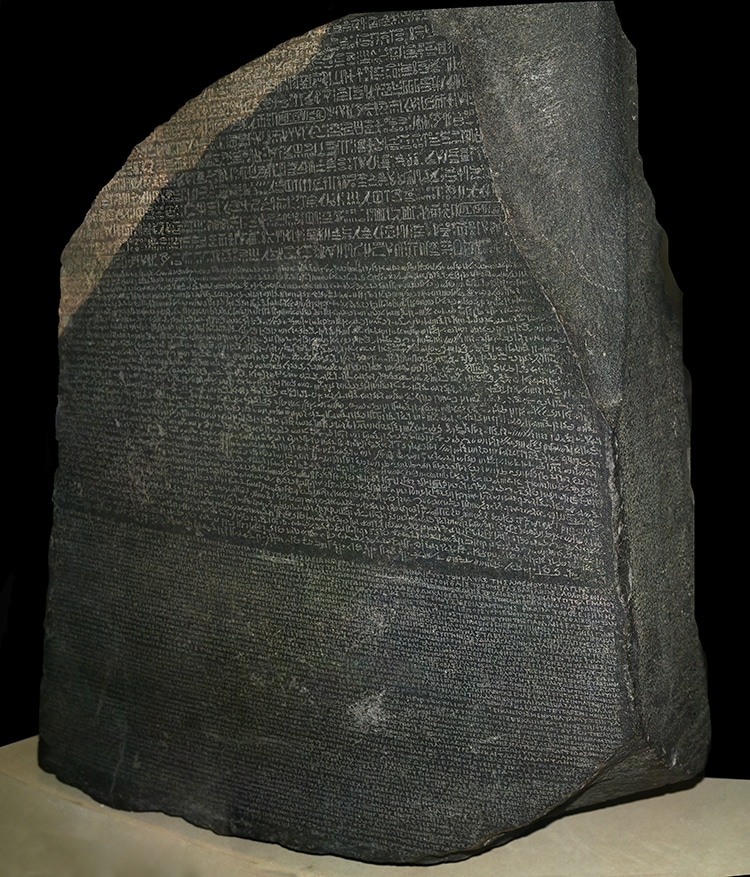The Rosetta Stone is currently housed in The British Museum.
The 1,680-pound granodiorite stone was first discovered in1799 by a French soldieron Napoleon’s Egyptian campaign.
The military missionwhich also served as a convenient mechanism for colonial pillagingbrought the giant slab to Europe.

The Rosetta Stone is currently housed in The British Museum. (Photo: © Hans Hillewaert viaWikimedia Commons,CC BY-SA 4.0)
Inscribed with three scripts in use during the second century BCE Egypt, what does the monumentalRosetta Stoneactually say?
The three sections of text are written once inEgyptian hieroglyphs, often used for priestly decrees.
Demotic, the script largely used by average Egyptians, is also included.
While some lines have been lost to breakage, the text is quite legible.
However, the ability to read hieroglyphs was lost around the fourth century CE.
The decree also mandates many copies of its text be engraved and posted around the country in temples.
Archeologists have found other copies of the decree, suggesting it was in fact widely disseminated.
The Rosetta Stone may be the most well-known example, but countless other Egyptian written records exist.
Industry and the state were exceptionally well-organizedevenattendancewas kept on the job.
The Rosetta Stone, too, has recently been central to calls forrepatriation.